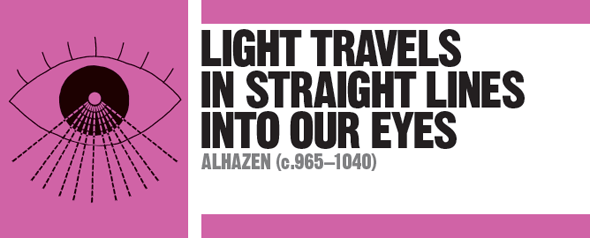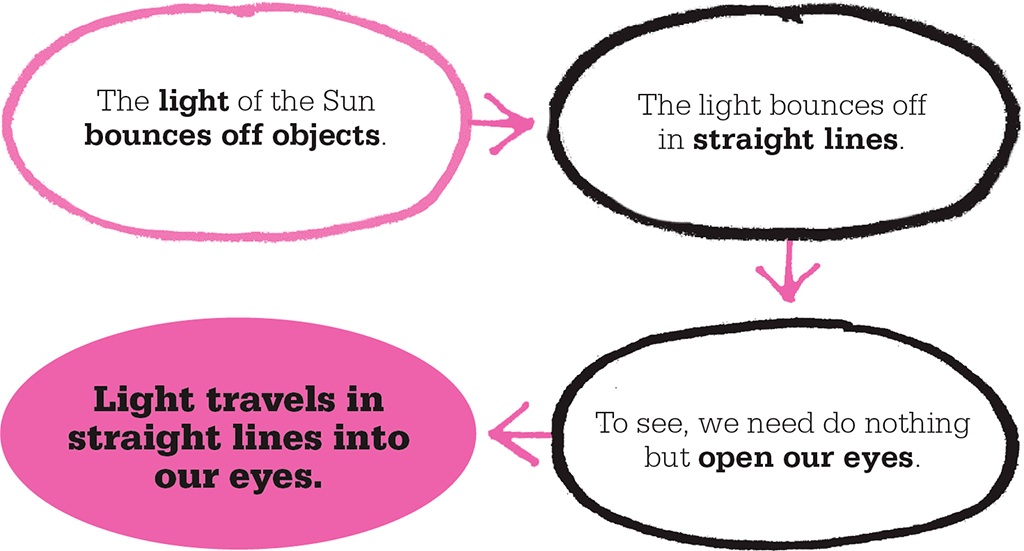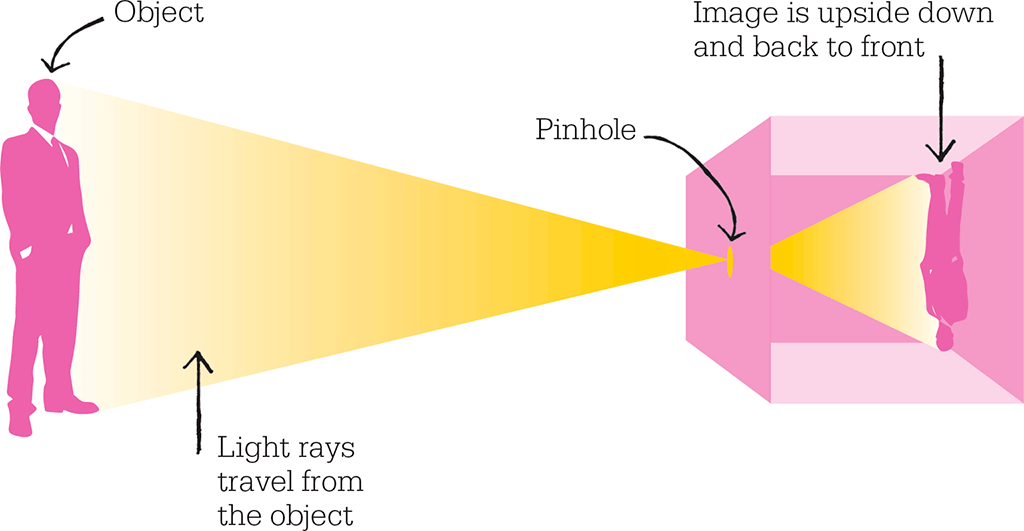
IN CONTEXT
Physics
350 BCE Aristotle argues that vision derives from physical forms entering the eye from an object.
300 BCE Euclid argues that the eye sends out beams that are bounced back to the eye.
980s Ibn Sahl investigates refraction of light and deduces the laws of refraction.
1240 English bishop Robert Grosseteste uses geometry in his experiments with optics and accurately describes the nature of colour.
1604 Johannes Kepler’s theory of the retinal image is based directly on Alhazen’s work.
1620s Alhazen’s ideas influence Francis Bacon, who advocates a scientific method based on experiment.
The Arab astronomer and mathematician Alhazen, who lived in Baghdad, in present-day Iraq, during the Golden Age of Islamic civilization, was arguably the world’s first experimental scientist. While earlier Greek and Persian thinkers had explained the natural world in various ways, they had arrived at their conclusions through abstract reasoning, not through physical experiments. Alhazen, working in a thriving Islamic culture of curiosity and enquiry, was the first to use what we now call the scientific method: setting up hypotheses and methodically testing them with experiments. As he observed: “The seeker after truth is not one who studies the writings of the ancients and…puts his trust in them, but rather the one who suspects his faith in them and questions what he gathers from them, the one who submits to argument and demonstration.”

Understanding vision
Alhazen is remembered today as a founder of the science of optics. His most important works were studies of the structure of the eye and the process of vision. The Greek scholars Euclid and, later, Ptolemy believed that vision derived from “rays” that beamed out of the eye and bounced back from whatever a person was looking at. Alhazen showed, through the observation of shadows and reflection, that light bounces off objects and travels in straight lines into our eyes. Vision was a passive, rather than an active, phenomenon, at least until it reached the retina. He noted that, “from each point of every coloured body, illuminated by any light, issue light and colour along every straight line that can be drawn from that point.” In order to see things, we have only to open our eyes to let in the light. There is no need for the eye to send out rays, even if it could.
Alhazen also found, through his experiments with bulls’ eyes, that light enters a small hole (the pupil) and is focused by a lens onto a sensitive surface (the retina) at the back of the eye. However, even though he recognized the eye as a lens, he did not explain how the eye or the brain forms an image.

Alhazen provided the first scientific description of a camera obscura, an optical device that projects an upside-down image on a screen.
Experiments with light
Alhazen’s monumental, seven-volume Book of Optics set out his theory of light and his theory of vision. It remained the main authority on the subject until Newton’s Principia was published 650 years later. The book explores the interaction of light with lenses, and describes the phenomenon of refraction (change in the direction) of light – 700 years before Dutch scientist Willebrord van Roijen Snell’s law of refraction. It also examines the refraction of light by the atmosphere, and describes shadows, rainbows, and eclipses. Optics greatly influenced later Western scientists, including Francis Bacon, one of the scientists responsible for reviving Alhazen’s scientific method during the Renaissance in Europe.
"The duty of the man who investigates the writings of scientists, if learning the truth is his goal, is to make himself an enemy of all that he reads."
Alhazen
ALHAZEN
Abu Ali al-Hassan ibn al-Haytham (known in the West as Alhazen) was born in Basra, in present-day Iraq, and educated in Baghdad. As a young man he was given a government job in Basra, but soon became bored. One story has it that, on hearing about the problems resulting from the annual flooding of the Nile in Egypt, he wrote to Caliph al-Hakim offering to build a dam to regulate the deluge, and was received with honour in Cairo. However, when he travelled south of the city, and saw the sheer size of the river – which is almost 1.6km (1 mile) wide at Aswan – he realized the task was impossible with the technology then available. To avoid the caliph’s retribution he feigned insanity and remained under house arrest for 12 years. In that time he did his most important work.
Key works
1011–21 Book of Optics
c.1030 A Discourse on Light
c.1030 On the Light of the Moon
See also: Johannes Kepler • Francis Bacon • Christiaan Huygens • Isaac Newton